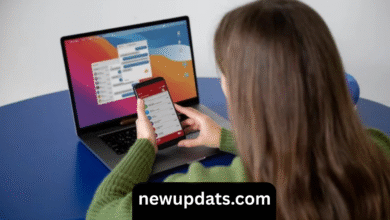5starsstocks.com best stocks In the evolving world of online investment platforms, 5starsstocks.com has emerged as a trusted source for financial insights, market trends, and detailed stock analysis. The website has become synonymous with curated stock recommendations tailored for both novice investors and experienced traders. Its focus is to highlight the best stocks in various sectors while offering clarity through expert analysis, real-time data, and historical performance tracking. As the digital stock market landscape becomes increasingly competitive, platforms like 5starsstocks.com are transforming how individuals approach investing and portfolio management.
The Mission Behind 5starsstocks.com
The primary mission of 5starsstocks.com is to empower users with knowledge and insights needed to make sound investment decisions. At its core, the site is dedicated to researching and presenting high-potential stocks that could yield consistent long-term or short-term returns. It acts as a financial compass for users, identifying key market opportunities, understanding the economic backdrop, and recommending stocks based on solid fundamentals, technical indicators, and macroeconomic trends.
Unlike other generalized financial news websites, 5starsstocks.com operates with a laser focus on identifying top-tier stocks across various industries. Whether the market is in a bullish uptrend or facing correction, the platform aims to give users insights into which stocks are worth tracking, when to buy, and what to watch for in terms of performance indicators.
Research Methodology for Finding the Best Stocks
One of the defining strengths of 5starsstocks.com is its comprehensive and multi-layered research methodology. The process of finding the best stocks involves analyzing both quantitative and qualitative factors. These include earnings reports, dividend 5starsstocks.com best stocks performance, market capitalization, debt-to-equity ratios, P/E ratios, and broader industry conditions. Equally important are the qualitative dimensions such as management integrity, innovation capability, corporate strategy, and adaptability to changing markets.
The site integrates traditional financial models with modern algorithmic tools to forecast stock trends. It frequently utilizes historical data to build predictive models that help in identifying stocks with favorable future potential. Additionally, the site often includes sentiment analysis drawn from investor behavior and financial news to enhance the selection process.
Sector-Wise Stock Focus
The best stocks highlighted by 5starsstocks.com span a wide range of sectors, including technology, healthcare, energy, consumer goods, and finance. Each sector is analyzed based on its growth potential, market volatility, and cyclical trends. For example, in the technology sector, the focus is often on companies involved in artificial intelligence, cloud computing, and cybersecurity. Meanwhile, the healthcare sector analysis tends to emphasize biotech firms, pharmaceutical giants, and medical device manufacturers showing clinical trial success or regulatory approvals.
In finance, the platform explores traditional banks, fintech startups, and asset management companies that have strong balance sheets and impressive earnings growth. The energy sector coverage may range from oil and gas producers to renewable energy firms transitioning toward green energy. This sector-based analysis allows investors to diversify their portfolios with high-performing stocks while aligning with their individual investment goals.
User Experience and Platform Features
What sets 5starsstocks.com apart is its user-centric design and easy-to-navigate interface. The site provides users with dashboards that display curated lists of the best-performing stocks, real-time price tracking, historical charts, and future projections. It also integrates customizable filters that allow users to sort stocks based on market cap, risk level, dividend yield, or other personalized metrics.
A key feature is the stock performance tracker, which records historical gains, losses, and relevant news events for each stock. This helps users monitor how a stock has responded to specific economic developments or corporate events. Furthermore, users can create watchlists and receive notifications when a selected stock hits a target price or experiences significant volume changes.
Educational Resources and Investor Guidance
Beyond identifying top stocks, 5starsstocks.com also positions itself as an educational hub for those seeking to improve their financial literacy. The platform offers articles, webinars, and tutorials focused on stock market fundamentals, portfolio diversification strategies, and understanding financial ratios. These resources are crafted for both beginners learning the ropes of stock trading and seasoned investors refining their strategies.
Educational guides often cover topics such as how to evaluate earnings calls, the importance of cash flow statements, or how to detect undervalued or overvalued stocks. In this way, the site builds a bridge between financial analysis and practical decision-making, ensuring users not only know which stocks to consider but also why they are being recommended.
The Role of Analysts and Expert Contributors
The reputation of 5starsstocks.com is reinforced by a team of financial analysts, market researchers, and industry veterans who contribute regularly to the platform. These experts bring diverse insights from hedge fund management, equity research, and institutional investing, which add depth to the site’s stock reviews and projections.
Each recommended stock often includes an analyst’s commentary, where they elaborate on why the stock deserves attention. These insights may explore the company’s recent strategic partnerships, product innovations, global expansion, or other catalysts likely to impact its stock value. The transparency in presenting both pros and cons makes the analysis balanced and trustworthy.
Tracking Historical Success and Market Accuracy
An essential component of any stock recommendation site is its track record. 5starsstocks.com maintains an archive of past recommendations and provides performance statistics for each. This transparency allows users to assess how successful the site has been in predicting market movements and stock price appreciation.
The platform frequently conducts retrospective evaluations of its top picks, examining how those stocks performed against benchmark indices like the S&P 500 or NASDAQ Composite. By doing so, the site holds itself accountable and enables users to trust its recommendations based on consistent historical accuracy.
Community Engagement and Investor Networking
5starsstocks.com understands the value of community in the investing world. It has built an active user community where members can share opinions, post updates, and ask questions about stock picks. These discussion forums allow for the exchange of ideas, fostering a collaborative environment where beginners can learn from experienced traders.
In addition to online forums, the site also hosts virtual meetups, Q&A sessions with analysts, and panel discussions around market outlooks. These events further enrich the user experience and build a sense of loyalty among its growing base of subscribers.
Subscription Plans and Access to Premium Content
While some features on 5starsstocks.com are accessible for free, the platform also offers tiered subscription plans that unlock premium content. Subscribers gain access to exclusive stock recommendations, early alerts, and in-depth financial reports. These reports often include SWOT analyses, investment theses, risk assessments, and valuation models.
Premium users can also benefit from monthly newsletters summarizing market trends, economic forecasts, and curated picks tailored to different risk appetites. This tiered access allows users to scale their use of the platform according to their investing needs and level of expertise.
Adapting to Market Volatility and Global Trends
Financial markets are constantly changing, influenced by geopolitics, economic cycles, and investor sentiment. 5starsstocks.com maintains its edge by rapidly adapting to these fluctuations. The site continuously updates its stock ratings and analyses to reflect current market realities. For instance, during periods of economic downturn or inflationary pressure, the platform may shift focus toward recession-proof or defensive stocks like utilities, healthcare, and consumer staples.
Likewise, in times of economic recovery, growth-oriented sectors such as technology and industrials may dominate the site’s recommendations. By being agile and responsive, 5starsstocks.com helps investors navigate both bull and bear markets with confidence.
Ethical Investing and ESG Considerations
Another important dimension of stock selection at 5starsstocks.com is the growing emphasis on ESG—Environmental, Social, and Governance—criteria. The platform is increasingly evaluating companies not just based on financial performance, but also on their sustainability practices, ethical leadership, and social responsibility.
This approach resonates with modern investors who are seeking more than just monetary returns. Stocks that score high on ESG metrics are often highlighted on the platform as long-term winners due to their resilience, strong brand image, and regulatory compliance. This conscious investing trend aligns well with the broader shift toward socially responsible investing.
Conclusion The Future of 5starsstocks.com in Investment Research
As the global investment landscape grows more complex, platforms like 5starsstocks.com play a crucial role in guiding investors toward informed decisions. Its meticulous research methodology, expert-driven analysis, educational tools, and user-friendly interface combine to create a comprehensive stock market resource.
By consistently identifying high-potential stocks across industries, adapting to market changes, and promoting transparency, 5starsstocks.com has earned its place as a leading stock recommendation website. Whether users are interested in building a robust long-term portfolio or seeking short-term trading opportunities, the platform offers valuable insights that can shape their financial future. As the platform continues to evolve, it is likely to incorporate even more advanced tools, data analytics, and AI-driven forecasts to further enhance its reputation and reliability in the investment community.
FAQs
What kind of investors is 5starsstocks.com best suited for?
5starsstocks.com is ideal for both beginner investors and experienced traders. It provides basic guidance for those new to investing while offering advanced tools and analysis for professionals.
How often are the stock recommendations updated?
The stock recommendations on 5starsstocks.com are regularly updated based on market movements, earnings releases, and global economic events.
Does 5starsstocks.com offer real-time stock data?
Yes, the platform provides real-time stock tracking and performance metrics for listed equities.
Is there a free version of 5starsstocks.com?
Yes, a portion of the platform is accessible 5starsstocks.com best stocks premium content, including exclusive stock picks and deep-dive analyses, is reserved for subscribers.
How accurate are the stock predictions?
5starsstocks.com has a solid track record of performance, with transparency on past recommendations and how they have fared compared to the market indices.




